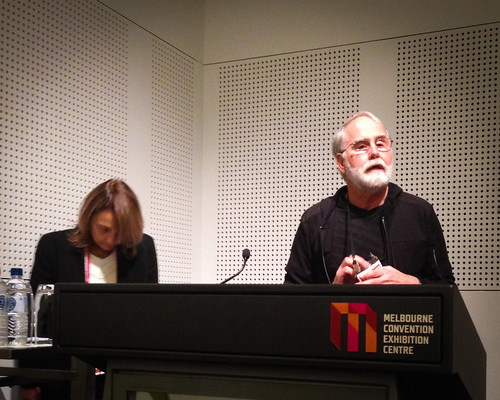Paper presented at #husITa14 in Melbourne, Australia, July, 2014.
Presenters
Beverly Black & Richard Schoech (University of Texas at Arlington, USA).
Abstract
High rates of substance abuse (SA) and relationship violence (RV) among teens suggests a need to create innovative prevention programs. Our study evaluated Choice and Consequences (C&C), a social, multi-user, tablet-based game to reduce the risks associated with SA and RV.
For 7 class periods across two weeks, 35 students played the game, selecting activities to create a fun, but safe weekend. C&C presented various scenarios, such as someone starts touching you without your consent. Players received points and rationales for each action they selected that informed them as to the fun and risk associated with the actions.
Following game playing, students (n=24) participated in three separate gender focus groups. Each focus group addressed the level of realism of the game, ability to learn from the game and aspects they liked/disliked about the game. Focus groups were audiotaped and transcribed. Transcriptions were analyzed using NVivo 9.
Results from the focus groups found that boys and girls liked the concept of the game and its activities; they especially liked the social atmosphere during the game. They liked the facts that gave information on each action and consequence. They liked rating the fun level of each action. Youth preferred the delivery method over a didactic presentation. Youth agreed that the consequences of the actions choices were realistic; a player lost points for taking drugs, but gained points for looking cool with peers. Youth stated the game could help prevent SA and RV if played before they experience the problems presented in the game in real-life. The youth stated that the RV information may be more helpful than the SA information.
Results suggest that game delivery method, using multi-media is a promising prevention program method for youth. Results also suggest gaming may be applied to other areas of prevention.
Powerpoint
[slideshare id=36934590&doc=sat2171130beverlyblack-140713201303-phpapp02]
Back to programme

